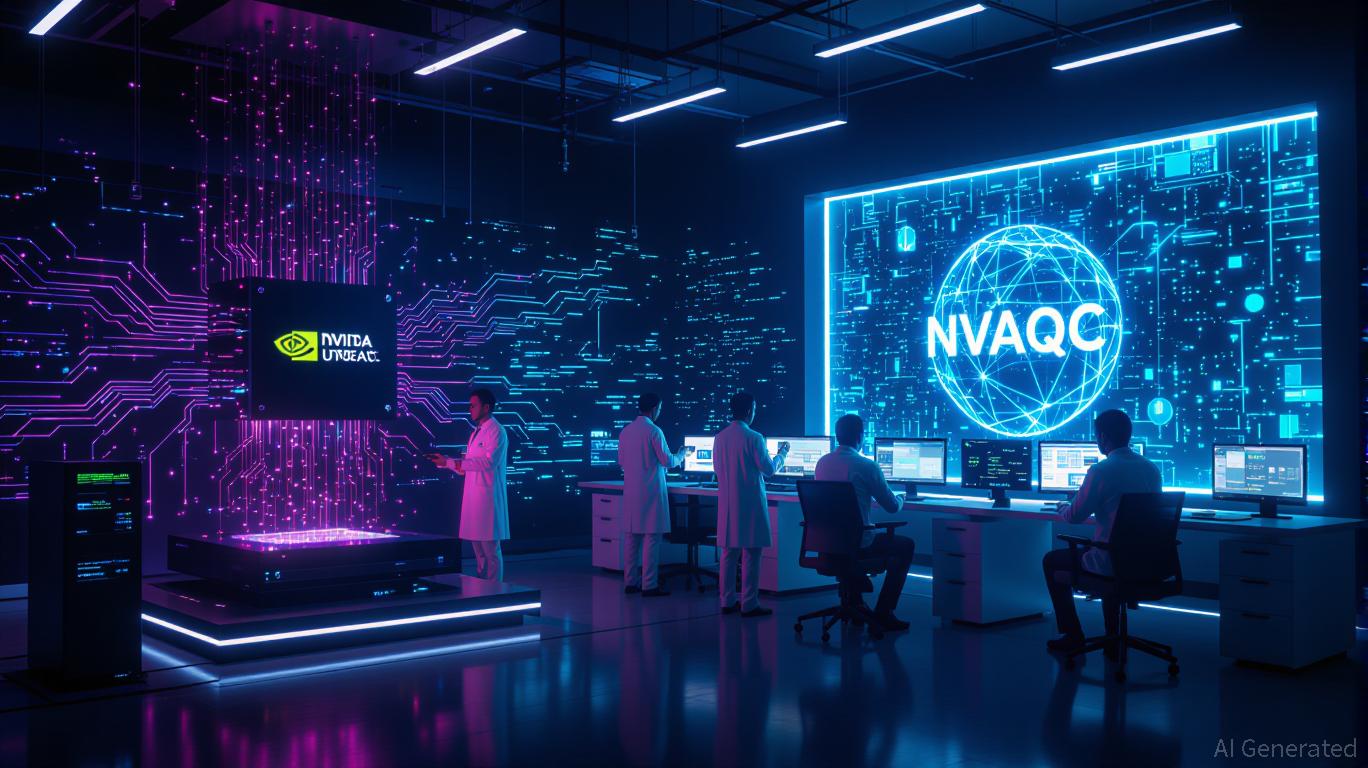
The quantum computing revolution is no longer a distant dream—it is a $100 billion industry by 2030, with players ranging from pure-play startups to tech giants. Yet, while investors chase speculative bets on companies like IonQ (IONQ) and Quantum Computing Inc. (QUBT), one name remains conspicuously undervalued: NVIDIA. This is not a company on the sidelines of quantum computing but a strategic architect of its future. By leveraging its AI dominance, quantum software tools, and partnerships with industry leaders, NVIDIA is positioning itself to dominate the quantum era—despite being priced like a traditional semiconductor stock.
The Contrarian Case: Why NVIDIA’s Quantum Play Is Undervalued
NVIDIA’s quantum computing initiatives are often overshadowed by its AI and data center dominance. However, its NVIDIA Accelerated Quantum Research Center (NVAQC)—a $1.2 billion facility in Boston—has become a linchpin in the global quantum race. The NVAQC integrates NVIDIA’s GB200 NVL72 supercomputers with Quantinuum’s System H2, the world’s most powerful quantum processor (quantum volume of 2,097,152). This hybrid approach addresses critical challenges like qubit noise and quantum error correction (QEC), which are essential for practical quantum applications in drug discovery, materials science, and AI optimization.
Yet, NVIDIA’s quantum division remains a footnote in its financials. In 2025, the company reported $130.5 billion in total revenue, with quantum-related revenue still in the early stages. Its forward P/E ratio of 40 and P/S ratio of 12.3x (as of August 2025) appear unexciting compared to the stratospheric multiples of pure-play quantum firms. For context:
- IonQ (IONQ) trades at a P/S of 5,700x despite $7.6 million in Q1 2025 revenue.
- Quantum Computing Inc. (QUBT) has an EV/Revenue multiple of 4,349x, based on $0.5 million in LTM revenue.
- D-Wave (QBTS) and Rigetti (RGTI) also trade at P/S ratios exceeding 1,000x, despite minimal revenue and operating losses.
This valuation disconnect is the crux of the contrarian thesis. While pure-play quantum firms are priced for speculative hype, NVIDIA is priced for execution. Its $53.7 billion in cash reserves (Q1 2025) and ecosystem dominance in AI and data centers provide a financial moat that smaller players lack. NVIDIA isn’t just building quantum hardware—it’s creating the software infrastructure (CUDA-Q, CUDA-QX) that will power the next generation of hybrid quantum-classical applications.
Strategic Ecosystem Dominance: NVIDIA’s Quantum Playbook
NVIDIA’s strength lies in its ability to bridge the gap between quantum and classical computing. Its CUDA-Q platform allows researchers to develop hybrid algorithms, while its partnerships with Harvard, MIT, and Quantinuum accelerate real-world applications. For example:
- Quantum Error Correction (QEC): NVIDIA’s Belief Propagation-Ordered Statistics Decoding (BP-OSD) algorithm has demonstrated 10x speedups in QEC, a critical step toward scalable quantum computing.
- International Expansion: Through Quantinuum, NVIDIA is expanding quantum adoption in Qatar and participating in DARPA’s Quantum Benchmarking Initiative (QBI), a $1.2 billion program to build a “useful” quantum computer by 2033.
- AI-Quantum Synergy: NVIDIA’s GB200 NVL72 supercomputers are already being used to simulate quantum systems, reducing the time required for quantum algorithm development from years to months.
These initiatives position NVIDIA as the operating system of quantum computing. Unlike pure-play firms, which are betting on a single quantum architecture (e.g., IonQ’s trapped-ion or D-Wave’s annealing), NVIDIA’s hybrid approach ensures it remains relevant regardless of which quantum hardware wins the long-term race.
The Long Odds: Why the Market Is Underestimating NVIDIA
The market’s skepticism is understandable. NVIDIA’s quantum efforts are still in the research phase, and mainstream quantum adoption isn’t expected until 2030. However, this underestimates the network effect of NVIDIA’s ecosystem. Consider:
- First-Mover Advantage in Quantum Software: CUDA-Q is already the de facto standard for quantum-classical integration, much like CUDA’s dominance in GPU computing.
- Scalable Revenue Streams: As quantum computing matures, NVIDIA’s AI and data center customers (e.g., Microsoft, Amazon, and automotive firms) will demand quantum-ready infrastructure, creating a $50 billion+ market opportunity.
- Defensive Positioning: NVIDIA’s $53.7 billion cash balance and $130.5 billion revenue base insulate it from the volatility that plagues pure-play quantum firms.
In contrast, companies like IonQ and D-Wave are burning through cash to build speculative hardware, with no clear path to profitability. IonQ’s $75.7 million Q1 2025 operating loss and D-Wave’s $11.3 million loss highlight the risks of betting on a single technology.
Investment Thesis: Buy the Stock, Short the Narrative
For investors, the case is clear: NVIDIA is the most undervalued quantum computing stock in 2025. Its P/E and P/S ratios are justified by its AI-driven revenue growth and long-term quantum potential. Meanwhile, pure-play firms are priced for a future that may never materialize.
Actionable Steps for Investors:
1. Buy NVIDIA (NVDA) at current levels, targeting a 30%+ return by 2030 as quantum adoption accelerates.
2. Short overvalued peers like IonQ and D-Wave, which face existential risks if quantum computing fails to scale.
3. Monitor Q2 2025 Earnings for updates on NVIDIA’s NVAQC progress and partnerships.
The quantum computing bubble is inflating, but NVIDIA is the only player with the financial strength, ecosystem dominance, and strategic vision to survive—and thrive—in the post-bubble era. For contrarian investors, the time to act is now.
